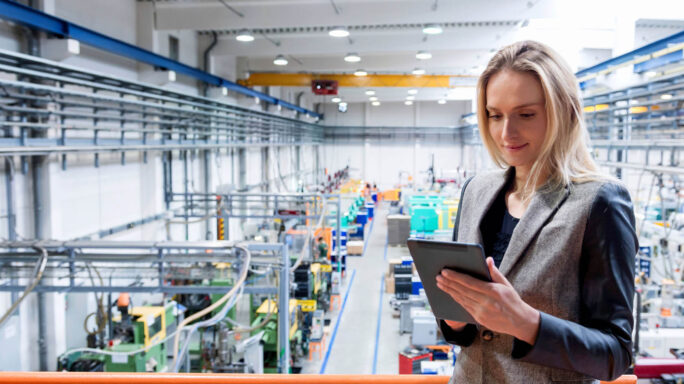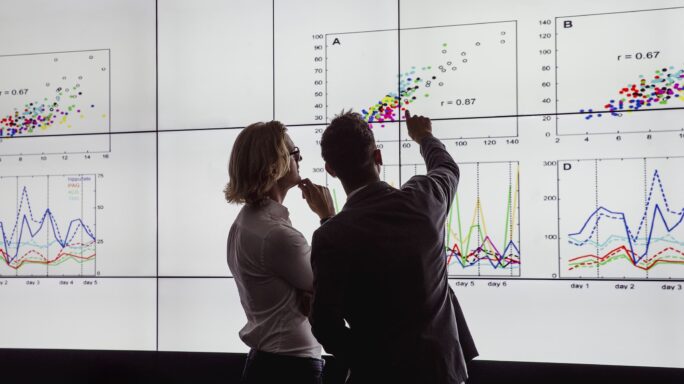Business planning
iERP: Closing the gap between manufacturers and customers

Inefficient manufacturing processes, such as overproduction, defective output, imbalanced inventory, idle equipment, and employees waiting for instruction create expensive loss and waste issues that organisations can ill afford. These wasteful processes and practices drain a business’s ability to navigate the turbulent global market in pursuit of new opportunities.
Ultimately, unchecked inefficiencies will cost a company its competitive advantage, customer base, and reputation.The COVID-19 pandemic has highlighted the damaging cost of inefficiency. The pressure is on for organisations to build a well-oiled value chain that is transparent, agile, and responsive to all stakeholders’ needs. Unfortunately, those manufacturers that remain dependent on traditional production systems such as financially focused ERP software and other outdated technologies, are at a significant disadvantage.
The costs of legacy ERP
Technology is always changing. No sooner has one iteration been launched and the next version is already being tested. It is little wonder then that some business decision-makers are reluctant to update their current IT architectures before demonstrating some return on investment. The problem is that legacy ERP systems will never be able to provide the intelligence and muscle necessary to address production inefficiencies and boost performance.
A legacy ERP system is typically siloed into addressing specific functions, usually finance.
It fails to connect the business as a whole, which inhibits collaboration and communication. Important information that requires immediate action often falls between the cracks that separate the various departments from one another. This can result in, for example, inventory variances.
A sure sign of an outdated ERP system running the show is when raw materials lie idle around the warehouse. This imbalance between supply and demand is costly in more ways than one: extra stock requires storage space, unused materials cannot contribute to revenue, and low or out-of-stock goods that are high in demand negatively impact the customer experience.
However, the costs of legacy ERP systems are far more extensive and expensive than one might think. In no time at all, these costs can cause irreparable damage to the business’s relationships with its customers and suppliers, reducing its shareholder value in the market. A recent IDC report on digital transformation reviews the business costs associated with outdated ERP systems and divides them into the following two groups:
Direct costs:
- Defective product recalls
- Legal expenses
- Emergency customer engagement and media fees
- Regulatory compliance
- Product replacement or customer credit
Indirect costs:
- Reputational or brand damage
- Loss of customers
- Marketing and PR support to recover market share
- Increased regulatory and testing requirements
Improve performance with the next generation of intelligent ERP
To compete in the global digital economy, manufacturers need to digitise their operational processes to eliminate costly inefficiencies and improve their overall organisational performance.
Of course, the challenge here is choosing the right technology that will provide the relevant fix for a company’s specific needs. To avoid a protracted choosing process, business decision-makers should limit their investigations to cloud software (or a hybrid on-site model) that harnesses the power of intuitive technologies such as AI, machine learning, and automation.
Intelligent ERP (iERP) systems offer manufacturers the brains and brawn necessary to mitigate the costly threats of product recalls, waste, supply chain bottlenecks, and underwhelming customer experiences. By gathering, using, and sharing information effectively, iERP systems feed data through algorithms to deliver actionable insights for improved financial, supply chain, and production management. Crucially, an iERP system breaks down functional siloes and unites the entire value chain under one objective: delivering an efficient and quality customer experience.
Tracing the supply chain
Digitised manufacturers all have one superpower in common: they can trace their entire supply chains – as well as all the information related to their products – as and when needed.
Product traceability is a key benefit of iERP. This enhanced ‘sight’ empowers managers with real-time responsiveness, operational agility, and proactive control, enabling them to keep up with ever-changing customer demands and stay on top of all areas of the business at once.
24/7 visibility also has a direct impact on profit. Being able to track and trace at all times reduces room for errors, eliminates wasteful expenditure, and improves productivity. How? By assigning accountability. If potential issues arise related to product quality, safety, or sustainability, manufacturers can respond immediately and fix the problem before it becomes a direct and/or indirect cost to the business.
Be smart
Legacy ERP systems are simply not smart enough to track a product’s complete history in detail – or provide real-time insights. They do not have the capabilities to help manufacturers identify and address inefficient processes and practices. They cannot ‘see’ the business as one entity. They lack the ability to connect the business with the customer.
On the other hand, an iERP system closes the gap between the manufacturer and the customer, boosting revenue and profit as a result. In fact, studies confirm that regardless of the type of process manufacturing, digital initiatives show an immediate return on investment for productivity and cost. There is no doubt that digitisation is determining the factories of the future and dividing them from those of the past.








Ask the author a question or share your advice